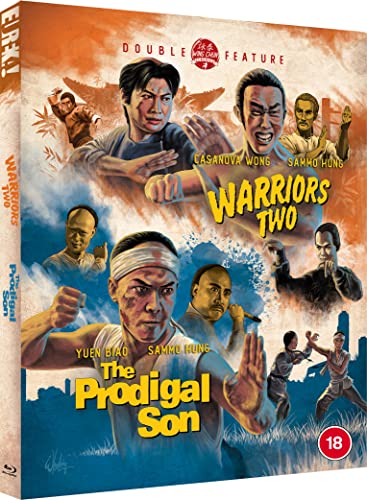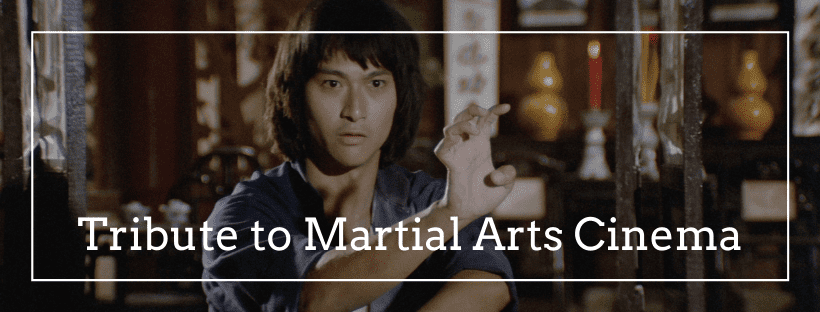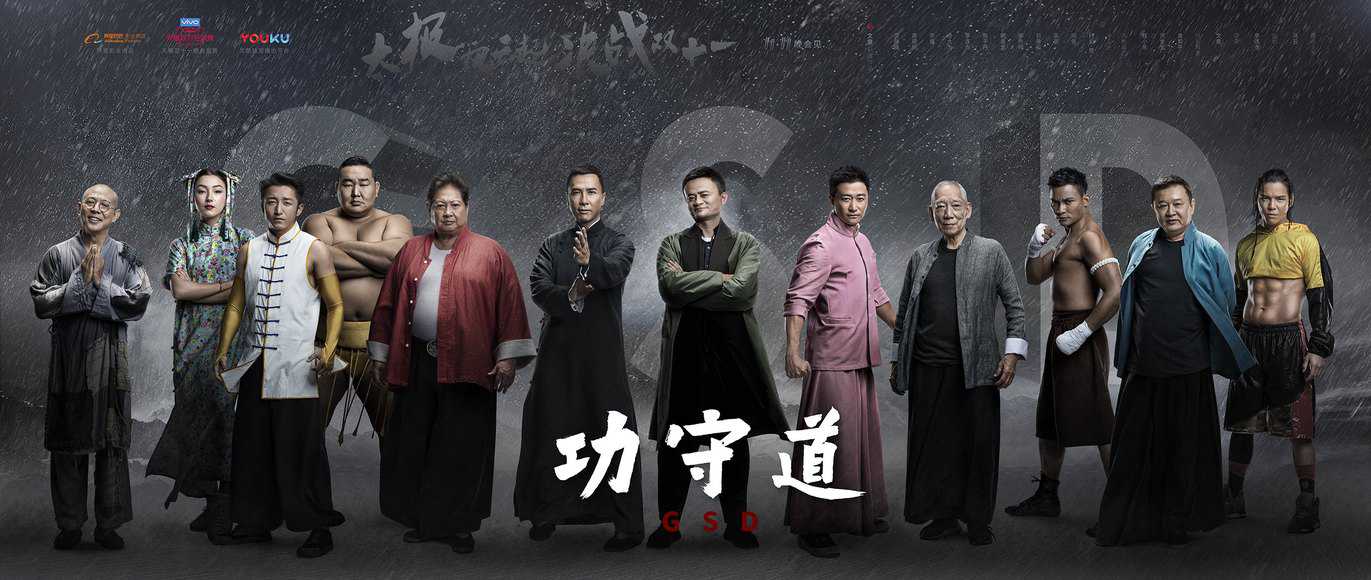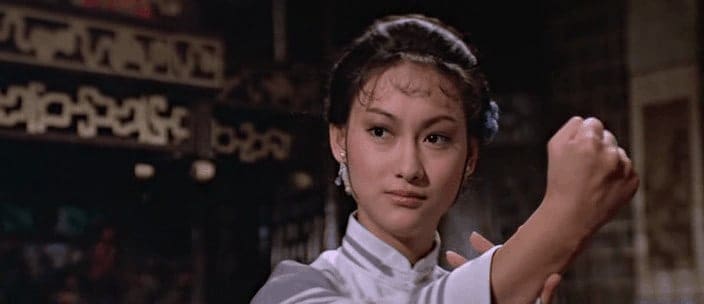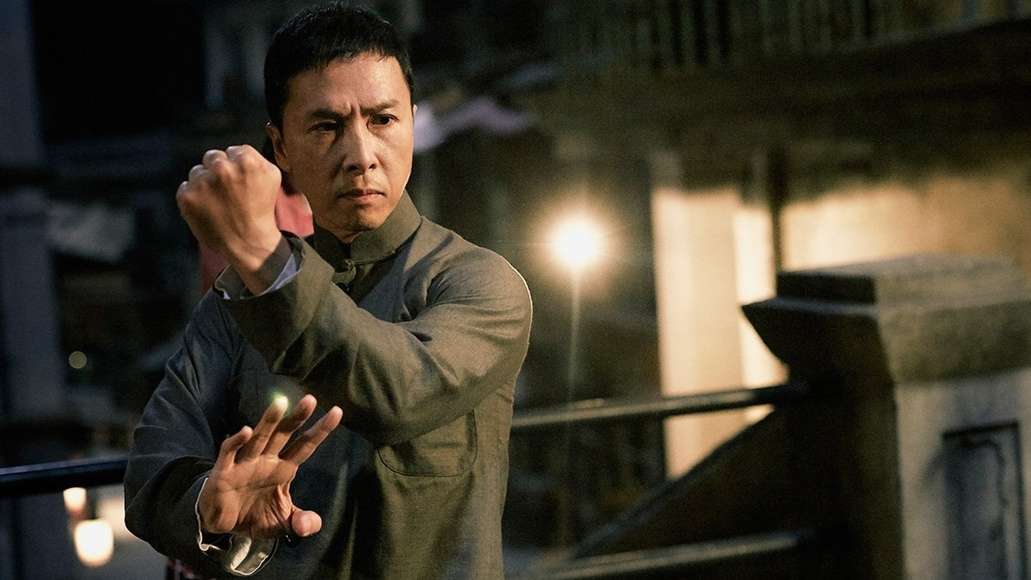If Wing Chun had a sponsor in cinema before the endless Ip Man movies, then it would be Sammo Hung. With “The Prodigal Son” he made what many would consider the definitive Wing Chun movie. Yet three years before, he also helmed another fictional version of the real-life exponent Leung Jan, only this time at the latter stages of his life. “Warriors Two” whist the lesser of the two, remains an interesting part of the Sammo Hung filmography, as it's the transition from the more traditional form of martial arts movies, to his increasingly varied work that was to follow
Buy This Title
on Amazon
Change Giver Wah (Casanova Wong) finds himself the fall guy in a plot by Boss Mok (Fong Hark-on) to become Mayor of the region. Boss Mok has ingrained himself into the community as part of a plot to fleece them of their wealth and after his henchmen dispatch the current Mayor and bodyguard (Lau Kar-wing), takes over and tries to dispose of Change Giver Wah. With his mother dead and the villains after him, he seeks refuge with Master Leung Jan (Leung Kar-yan) and his student Fat Chun (Sammo Hung). Desiring revenge, Change Giver Wah is eventually taken on as a student, but after the villains slay Leung Jan, the students must take revenge. However, Boss Mok has a few surprises up his sleeve as the final confrontation ensues.
Casanova Wong was one of the influx of Korean Super Kickers in the 1970's that helped elevate the standard of martial arts on screen with their flashy combination kicks. Whilst never achieving the level of success that some of his peers would, this remains a showcase of his talents. The shot of him leaping over the table to land a kick on Fong Hark-on remains an image burned into me from the first time I ever saw this movie on VHS. He, like many others, found in Sammo Hung a director that could make him look better than anyone else. Leung Kar-yan was an interesting figure in action cinema, being that he wasn't a traditional martial artist and instead an excellent mimic. His Leung Jan is the trademark master mixing compassion with absolute brutality in the training sequences. His death that triggers the inevitable revenge is a superbly drawn out, desperate confrontation as the villains stoop to several traps to overcome the master. Sammo himself plays another variation of the “fatty” (not me being un PC – this is what he is called) character that he would invariably play. As always, the character is brave but not the smartest. He gets to show off some of his skills but mostly takes a back seat to Casanova Wong.
Villains-wise, we have a mixed bag. Let's address the worst part first and get it out of the way. Dean Shek. Now I think he can be a really good actor, in “A Better Tomorrow 2” I thought he was excellent, if a bit overblown. Yet in martial arts movies, he always played the camp sidekick of the major villain who would get involved in the final scrap. I was actually willing him to die as his voice and mannerisms were so unfunny that it was beginning to annoy me to the point where I reached for the mute button to take away the pain. Clearly given the times he did this role it played well to the local audience but I hated it! To add to the problem, he gets a final fight with Sammo Hung that is tonally out of place in the midst of a blood feud! The comedy seems completely out of sync with the vicious fight going along at the same time. It feels a nod to conventions of the comedy kung fu film but detracts from the atmosphere. Fung Hark-on though is superb in a rare lead villain role. He just has one of those faces for villainy and gets to show off his skills in the incredible final battle.
The supporting bad guys feature Meng Hoi, Lee Hoi-san, Yuen Biao etc. Eric Tsang can also be spotted in some hideous fake teeth as a con artist and Lau Kar Wing crops up for a cameo as a bodyguard before checking out after taking some brutal kicks from Tiger Yan. The one female role of any note continues the problematic nature of women in Sammo Hung movies as gets little to do but act annoying and then get clearly presented as inferior to the others in the final reel.
This being a Sammo Hung film, it is filled with inventive choreography. The opening is in tune to the tradition of the time as introduces the characters in some scenic backdrops. From there we get a series of confrontations that allows each of the villains to distinguish themselves and set them up as dangerous opponents to be overcome. The framing is always clear with frequent wide shots to show off the skills. Added to this is the usual Sammo Hung style of not holding back. These fights are brutal and the impact of the blows shown to have a clear effect. It's prototype Sammo too, as here is where we begin to see the emergence of the master he was to become. The camera is more fluid than his contemporaries of the time and whilst the style is not yet fully formed, at this point it is obvious that he was heading in the right direction which would emerge in “The Prodigal Son”. The adherence to the exact form of Wing Chun is downplayed in favour of a more cinematic style that allows Casanova Wong to show his kicking range alongside the hand movements.
The score is another of the traditions of the time. Find a spaghetti western or conventional western and appropriate the score whilst no-one is looking. Not sure what the copyright laws were but somebody somewhere is definitely missing out on some royalties.
After “The Iron Fisted Monk” and “Enter the Fat Dragon”, this is where we begin to see the formation of the Sammo Hung feature. Whilst still framed in the structure of the time, there are glimpses of his cinematic philosophy with the impactful choreography and fluid direction. It has a few flaws that prevent it from being an absolute classic but is still a quality production. Just hit the mute button or skip every time Dean Shek appears and your appreciation of “Warriors Two” will be enhanced.



